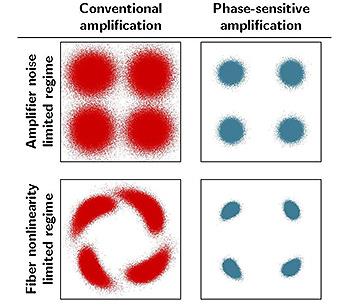With services such as video streaming and cloud storage creating demand for higher transmission capacity, new technologies capable of significant improvements over existing solutions are being explored.
Fibre optical transmission links have been found to be limited as a result of the accumulation of noise, originating from optical amplifiers in the link, and by the signal distortion from nonlinear effects in the transmission fibre. In what is being described as a ‘ground-breaking demonstration’, the university researchers were able to show that the use of phase-sensitive amplifiers can significantly, and simultaneously, reduce the impact of both of these effects.
“While there remain several engineering challenges before these results can be implemented commercially, the results show, for the first time, in a very clear way, the great benefits of using these amplifiers in optical communication”, explained Professor Peter Andrekson, who leads the research on optical communication at Chalmers University of Technology.
The amplifiers can provide a very significant reach improvement over conventional approaches, and could potentially improve the performance of future fibre-optical communication systems.

| Recovered signal constellation diagrams comparing conventional amplification and phase-sensitive amplification in an amplifier noise limited regime (-2 dBm launch power) and a fibre nonlinearity limited regime (8 dBm launch power). Illustration: Samuel Olsson |













